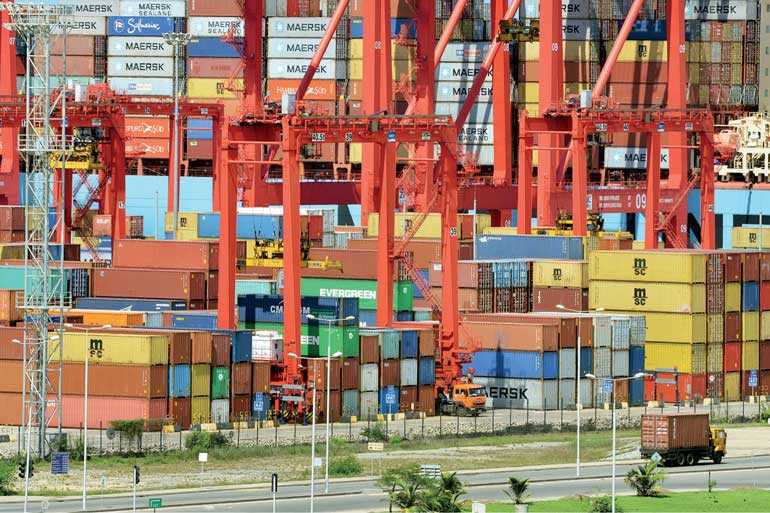Friday Dec 19, 2025
Friday Dec 19, 2025
Wednesday, 9 December 2020 00:00 - - {{hitsCtrl.values.hits}}

The main issue that importers and exporters encounter is the rise in the price of the product as the increase in freight charges directly affects the price of the product
by Isuru Ranawana
At present, the price incurred on containers which are being used for imports and exports activities or the price incurred on freight charges has gradually increased. This has become a major concern to the importers and exporters as they have to incur a cost twice as the freight prices than the price they incurred before within a year.
Due to this, the main issue that importers and exporters encounter is the rise in the price of the product as the increase in freight charges directly affects the price of the product. Even prior to the increase in the price of the product, some companies have added only a very low profit margin to their selling price. This is a substantial hindrance faced by small and medium scale businesses.
Let’s consider the main rationale behind this situation. In actual fact, this situation did not occur due to the discrepancies in the economic policy in Sri Lanka. As a matter of fact, this situation occurred as a result of the current COVID-19 pandemic. This rise in price will affect not only the shipping companies but also manufacturers, trading and retail companies as well which will ultimately affect the consumers. The main cause for this increase in price is the shortages in containers and inadequate spaces in vessels. This situation occurred due to the COVID-19 pandemic. From the beginning of the year 2020, COVID-19 virus has been affecting the whole world negatively which resulted a country lockdown in many countries by March 2020.
This condition adversely affected the economic activities in many countries. The employees who were employed at the ports of these countries were gradually declined. This resulted a decrease in productivity of cargo handling. As some of the manufacturing companies went out of business, hundred thousands of containers were stuck at their ports. Shipping lines also refrained from sailing the standard quantity of ships due to the decrease in cargo. These repercussions resulted an excess demand which precipitate the increase in freight cost.
On the other hand, China, the largest exporter in the world has managed to reduce the spread of the COVID-19 virus. The inflation rate is also comparatively lower in China than in Sri Lanka. Since China is supported by the Chinese Government, China was able to increase their exports as they were able to produce expeditiously and extensively than other countries. Moreover, China increased the quantity of vessels sent to America which is a major negative consequence to Sri Lanka as it resulted a decline in the ships coming to Sri Lanka. So these factors resulted in the increase of freight cost.
For example, a 40 ft container sent from China to Sri Lanka at the beginning of the year 2020 was $ 1,400 which increased up to $ 3,950 by the end of October. As per the shipping lines, there is a tendency for this situation to continue until March 2021.
They further explain that a favourable date for this situation cannot be precisely predicted and told as this is the first time for an economy to deal with a virus and reinstating the economy to the previous level will consume a considerable amount of time.